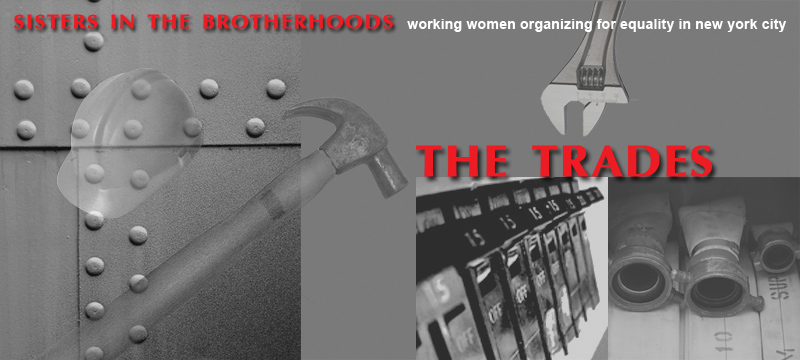 |
||||||
Union Activist and Leader: Room at the Top The numbers of women working in blue-collar nontraditional jobs are low, but the number of women in top union leadership positions is even lower. In unions the road to the leadership still presents daunting political obstacles for women, and the promise of equal rights remains unfulfilled. Eileen Sullivan emphasized the critical importance of having the female perspective present at the negotiating table and in union leadership circles. “Without a woman’s voice involved in the negotiations and arbitrations, [it] would be a travesty…,” she said. “There has to be at least woman because there are issues that are important to women that get negated when the guys get together. …Most women’s issues are workers’ issues. They’re not just women’s issues. But they’re the items that men leave out. You have the daycare issues and health and safety. Absolutely! They just leave that out.” Lois Gray has spent her life studying and teaching about women in unions and producing scholarship on the subject. Gray is the Jean McKelvy—Alice Grant Professor of Labor Management Relations Emeritus at New York State School of Industrial and Labor Relations, where she was associate dean. Gray inaugurated the Cornell Institute for Women and Work. For 25 years she was chair of the New York State Apprenticeship Council. She also contributed her expertise to the board of directors for Nontraditional Employment for Women (NEW). According to Gray, women in the skilled blue-collar unions still experience difficulties in getting the representation they deserve is because the topic never made it to onto the agenda of their unions . She draws a distinction between the “Rosie the Riveters” and the next generation of pioneers. The former group had broad government support behind them during World War II and also benefitted from a brand of trade unionism already in place that lent some support to their entrance into nontraditional jobs. The second group of pioneers lacked those resources. Old attitudes prevail and create interference for women on the job and in their unions. Males in union leadership—for psychological, social, and economic reasons—resist the fact that females are ready, willing, and able to do nontraditional jobs. Gray believes that pressure for change must come from inside and outside the union. The impetus must arise from the rank-and-file—and women workers must become more demanding. An outside force for change could take the form of an organization like the Women’s Trade Union League (founded in 1903), which was a successful collaboration between activists inside and outside the ranks of labor. The Institute for Women's Policy Research echoes Gray's prescription for change in Seven Strategies That Promote Women's Activism and Leadership in Unions: "By claiming leadership, women can transform their lives, their unions, their workplaces, and their communities to reflect their needs. …We also hope that women's organizations will support women's union activism by cultivating stronger local ties at the grassroots. These relationships can benefit both union women and women's organizing." “All women need is the political will to act—to demand change—and to organize," said Gray. | ||||||
| ||||||
| Copyright 1997-2012 Jane LaTour/Talking History |
||||||